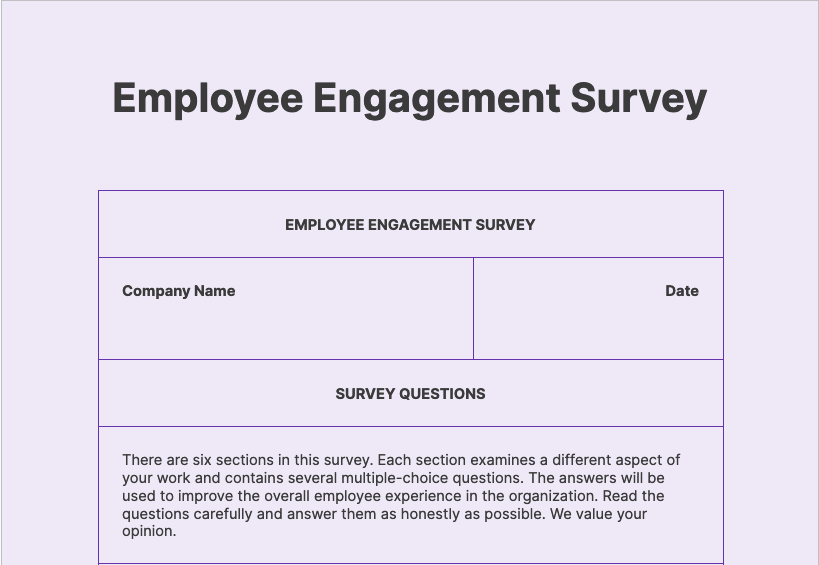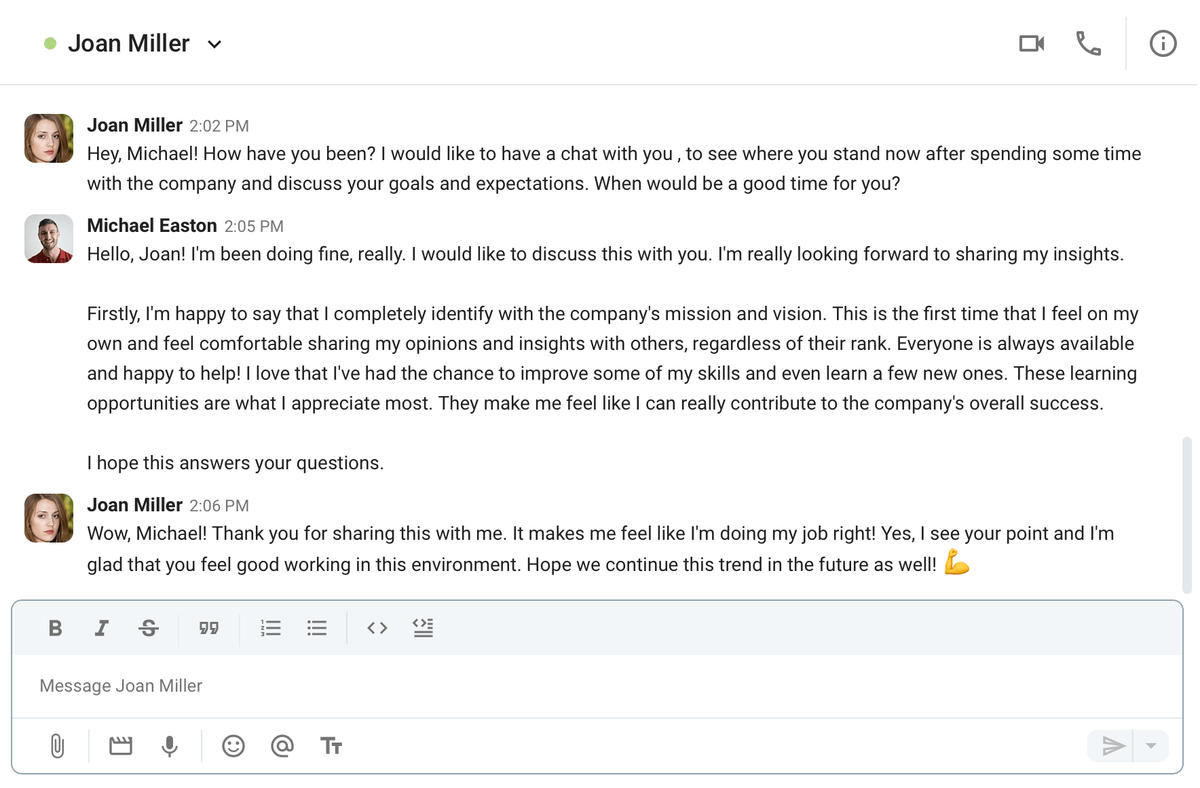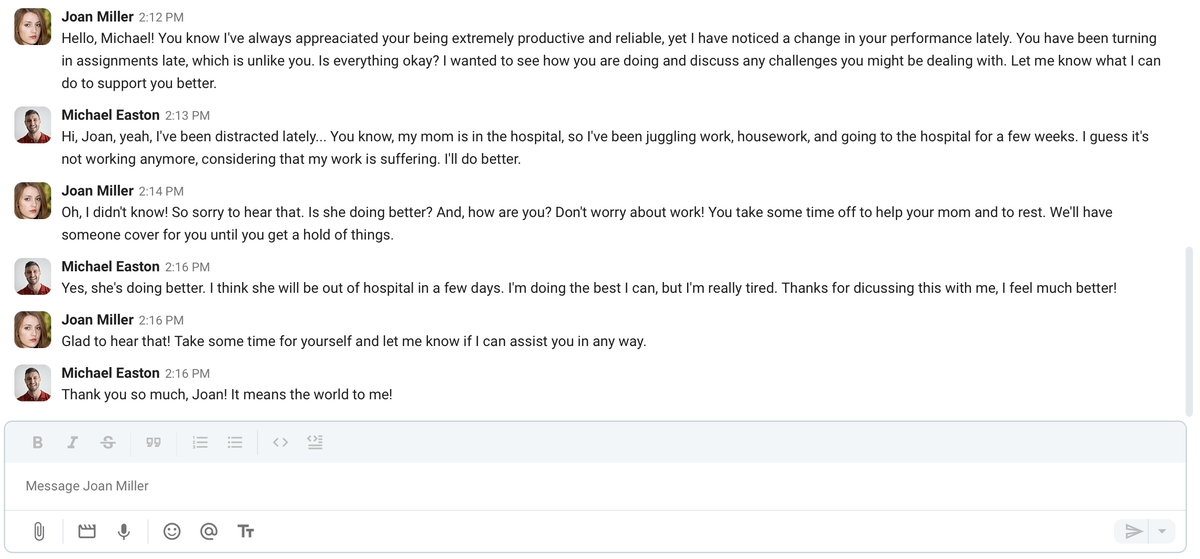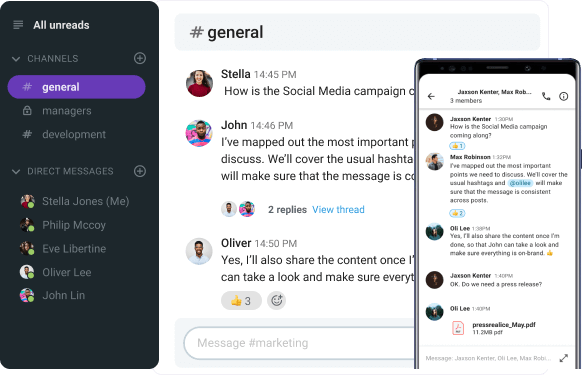The people-first approach has made it clear that successful businesses thrive on their competent workforce. Yet, besides being extraordinary at their jobs, employees have to practice a certain dose of energy and engagement to push a company forward.
However, the latest research shows that only 21% of employees are engaged.
This article serves to help you improve those statistics. Through curated tips and expert advice, we will familiarize you with the importance of employee engagement and how to increase it to cultivate a more motivated workforce.
So, sit tight and read on.

- Employee engagement encompasses enthusiasm, satisfaction, and commitment towards work and organizational goals.
- It is crucial for driving productivity and overall success within a company.
- Communication, recognition, and career development are critical elements in fostering employee engagement.
- Companies should focus on these aspects to cultivate a motivated and dedicated workforce.
- Regular feedback sessions, employee surveys, and providing growth opportunities are effective strategies.
- These approaches contribute to enhancing employee engagement and fostering a positive work culture.
Table of Contents
What is employee engagement?
Employee engagement is the enthusiasm, satisfaction, and commitment employees have toward their work and their company’s goals.
Employees who are engaged in the workplace care about their work and their performance and feel their effort is recognized and appreciated. A paycheck is not their sole motivation, but they rather find purpose in their work performance.
In that light, we differentiate between 3 types of workers:
- Engaged — employees who are highly involved in their work, a driving force that moves the organization forward.
- Not engaged (Quiet quitting) — employees who are psychologically disengaged from their work; they invest their time in their work, but not their passion or energy.
- Actively disengaged (Loud quitting) — employees who are resentful because their needs are not being met at work; aside from not giving their 100% at work, they may even negatively influence their engaged colleagues.
To better understand what makes an employee engaged, we reached out to Jack W. Wiley, Ph.D., the President and CEO of Jack Wiley Consulting and Employee Centricity and the author of The Employee Centric Manager.
Here’s how he defines an engaged employee:

“An employee who is engaged is one who:
- Has a high level of satisfaction with their employer,
- Sees their organization as a great place to work,
- Is committed to stay, and
- Serves as an advocate for the organization to others.”
Furthermore, Dr. Wiley highlights that engaged employees are “the very best corporate citizens.”
What are the 3 Cs of employee engagement?
Another way to better understand employee engagement is through the so-called 3 Cs of employee engagement:
- Care — Managers should be empathetic to their employees’ moods and personal problems. They should promote work-life balance to improve employee engagement.
- Competence — To enable their employees to grow, managers should make sure that they organize regular workshops and training sessions to facilitate employees’ skill development.
- Career — One way managers can support their employees in career development is by offering them job rotations and challenging tasks that lead to promotions, as well as giving them certain autonomy to make their own decisions.
All of these components of employee engagement depend on management, which is proof that managers are an integral part of each employee’s work experience. That also means the burden of employee satisfaction lies on management.
How to improve employee engagement: Tips & activities
There are different strategies you can use to improve employee engagement. Let’s see what some of them are.
Use employee engagement surveys
Employee engagement surveys can be a powerful tool for improving employee engagement.
There are 3 key points for crafting effective surveys:
- Learn what employee engagement entails,
- Understand what drives employee engagement, and
- Use survey results to improve problematic areas.
To make this process easier for you, we’ve created an Employee Engagement Survey. This survey can help you gather information about your employees and take the steps to address the issues and improve their engagement at work.

⬇️ Download the Employee Engagement Survey
Recognize the good work of your colleagues
Employee recognition is often overlooked as a factor in improving both productivity and employee engagement.
Namely, according to a recent study, 82% of employees agree that recognition for their efforts improves their engagement.
That is why it would be beneficial to create a work environment in which employees are rewarded for their work.
Account for each employee’s expectations and goals
There’s no better way to engage employees than to meet individually with them — you show them you respect, appreciate, and care about them.
You can use a business messaging app, Pumble to ask your employees about their expectations at work, as in our example below. Joan, an HR manager, is asking one of the employees to share his experience in the company so far, as well as his expectations and goals.

Hire competent managers
The role of managers in building employee engagement should, under no circumstances, be underestimated. After all, they are the mediators between the top management and the employees. This means managers are constantly interacting with the employees and are the first ones who should be aware of whether the employees are satisfied with their workload.
Because of that, HR managers should be especially careful when hiring middle managers, as they need to look for people with good communication skills.
Create opportunities for constructive feedback
Constructive feedback is the backbone of any successful business — it’s amazing how far constructive criticism can go in pushing people to do their best and contribute to the company’s overall success.
Let’s take a look at a Pumble example below. Joan has noticed a change in Michael’s performance, so she asks her what the problem is.

💡 PUMBLE PRO TIP
If you have any doubts on how to give constructive feedback, we’ve got you covered:
Keep employees aligned with the company’s mission and vision
Making sure that all employees understand and align with their company’s mission, vision, and values is a way to keep them motivated and loyal in the long run. When employees know they are on the same page goal-wise, they find it easier to commit and engage.
Improve overall employee experience
Happy employees are more engaged, more productive, and more motivated, as studies show, and that can all be achieved by ensuring your employees feel great where they are.
Don’t avoid feedback sessions or in-person communication — most employees will appreciate your engagement and effort.
Plus, organizing team-building activities from time to time won’t hurt. View these as rare opportunities to foster stronger relationships and improve the overall experience employees have working with your company.
Foster a healthy team structure
Managers and leaders should focus on creating a proper team structure and enabling communication between different departments and teams. Trust in your team members is critical for improving communication and, consequently, employee engagement.
This leads us to the importance of communication for increasing engagement.
Practice two-way communication
Last but not least, open communication, especially two-way communication, is paramount for improving employee engagement.
Employees should feel free to share their problems with the management. That is the surefire way for the employees to feel heard and appreciated.
—
Now that we’ve highlighted the best tips and activities to improve employee engagement, let’s shift our focus to understanding the various methods of measuring employee engagement effectively.
How to measure employee engagement?
We’ve seen how important it is to have engaged employees, so if you want to know how your team is doing, luckily, there are ways to measure it. Some of the most common ones are:
- Employee surveys
Our contributor Dr. Jack Wiley prefers employee survey items presented on a 5-point Likert rating scale with the following anchor points:
- Strongly agree,
- Agree,
- Neither agree nor disagree,
- Disagree, and
- Strongly disagree.
- One-on-ones
Another great way to measure engagement is by organizing regular one-on-one meetings with employees.
HR at RetroStyle Games, Dana Liubchenko, practices this method:

“Once a month, we talk with the employees about their work and how they feel about the processes in the company. Maybe they have ideas on how to improve some activities.”
Regular feedback from the employees is crucial in achieving high levels of engagement in a company.
- Employee lifecycle surveys
Although often neglected, employee lifecycle surveys are also a worthwhile method of measuring employee engagement.
More specifically, these include:
- New hire surveys,
- Stay surveys, and
- Exit surveys.
- Performance metrics
Last but not least, performance metrics can also be a valuable tool for measuring employee engagement, as our contributor, Julia Meyer, Chief Development Business Officer of Clever Control, highlights:

“Performance metrics, such as productivity, absenteeism rates, and turnover rates, can serve as indicators of employee engagement.”
Statistics speak volumes in this case. Namely, according to Pumble’s Employee engagement statistics, 92% of executives claimed engaged employees perform better than their disengaged coworkers.
Why is employee engagement important?
Let’s now identify the most important benefits that successful and engaged organizations enjoy.
- Employee engagement improves employee loyalty and satisfaction: According to a McKinsey article, employee experience with an emphasis on employee engagement is what drives employee loyalty and satisfaction.
- Employee engagement improves performance and increases retention: Engaged workers are 87% less likely to quit their jobs and leave their current company.
- Employee engagement leads to a happier and healthier workforce: Gallup’s report State of the Global Workplace: 2023 highlights that engaged employees are less stressed and depressed.
- Employee engagement lowers absenteeism rates: Statistics show that when employees are engaged, there is a 41% reduction in absenteeism.
- Employee engagement improves profitability: In their previously mentioned report, Gallup revealed that companies with a highly engaged workforce have 23% higher profit than those with miserable workers.
Now that we know what the benefits of employee engagement are, let’s see why communication is so important for good employee engagement.
Why is communication important for employee engagement?
To better understand the role of effective communication in employee engagement, we sought out answers from a few other experts on the topic. Let’s see what they said.
- It is the very core of employee engagement
According to Stephen Kohler, the CEO and Founder of Audira Labs and Executive Coach, communication is the very core of employee engagement. He says:

“Without the proper channels to regularly communicate, company culture will suffer. Good communication keeps businesses moving forward and allows every member of the team to be heard, which is vital to an engaged workforce.”
- It helps leaders better understand their employees’ needs
This came to light when we consulted Roberta Matuson, the President of Matuson Consulting. She believes that employers and managers should focus on using communication to better understand what their employees need and want:

“Communication can help you to better understand the wants and needs of your people so you can be more responsive. It can also help you gain a better grasp of an employee’s talents and skills, which at first glance may not be noticeable.”
- It enhances employees’ sense of belonging
According to Michael Moran, the Founder of Green Lion Search Group, communication makes employees feel heard, which increases their sense of belonging:

“Effective two-way communication means employees can share ideas, give feedback, or report problems, and believe they’ll be listened to when they do so. This also enhances belonging by making them feel their voice is heard.”
- It gives employees direction and purpose
Kohler finds communication to be critical for the many aspects of a business to run together smoothly:

“Envision an orchestra filled with talented musicians, but with no sheet music or a conductor — this would likely lead to frustration and, potentially, an inability to perform. Communication provides direction and purpose, all vital to a happy, engaged employee.”
- It fosters stronger relationships among employees
Matuson agrees that communication helps foster stronger relationships among employees.
She says:

“Communication can help you to better understand the wants and needs of your people so you can be more responsive. It can also help you gain a“Another outcome of effective communication is improved relationships between team members, which can lead to a more positive and rewarding work environment.” better grasp of an employee’s talents and skills, which at first glance may not be noticeable.”
Pumble’s role in enhancing employee engagement
Throughout our exploration, experts unanimously emphasize the pivotal role of open communication in fostering both business success and employee engagement. Without it, employees may feel misled and more inclined to seek opportunities elsewhere.
With this, it becomes clear that platforms like Pumble, a team communication app, offer a concrete solution to improving engagement levels with its efficient functions, such as:
- Direct messages,
- Channels,
- Threads,
- Video conferencing, and more.
Pumble allows companies to facilitate transparent communication, strengthen employee relationships, and ultimately boost employee engagement.
Elevate your team’s productivity and engagement – register for Pumble today!





